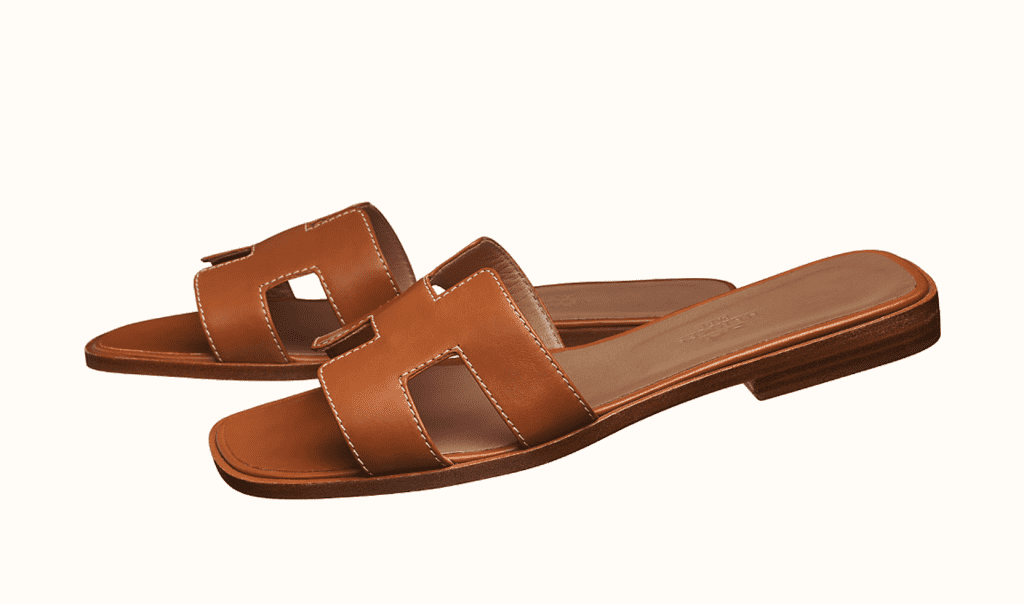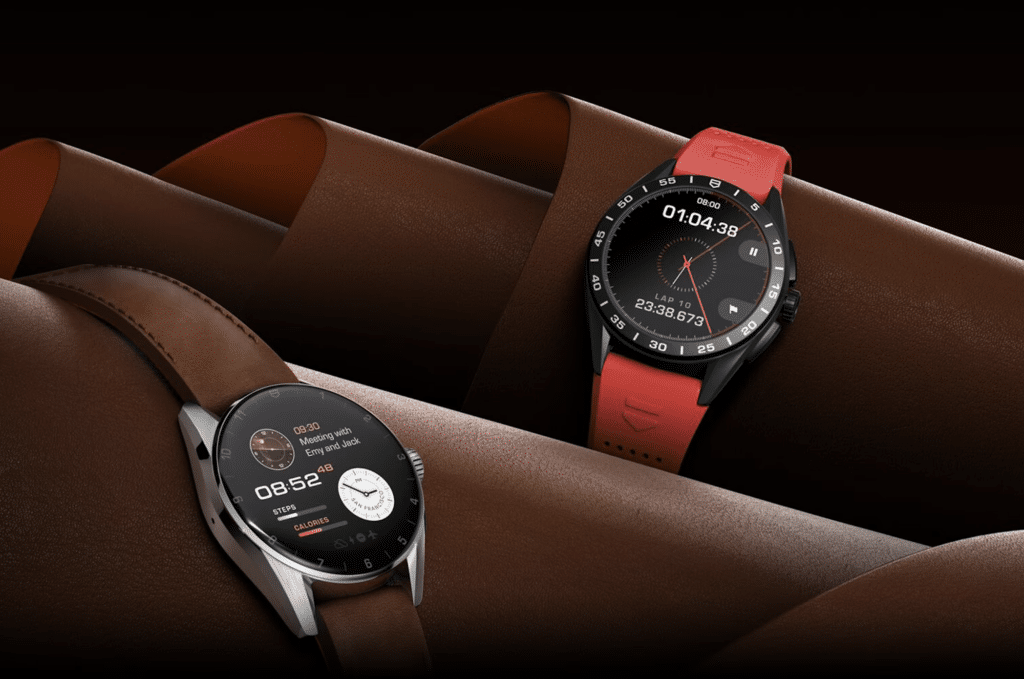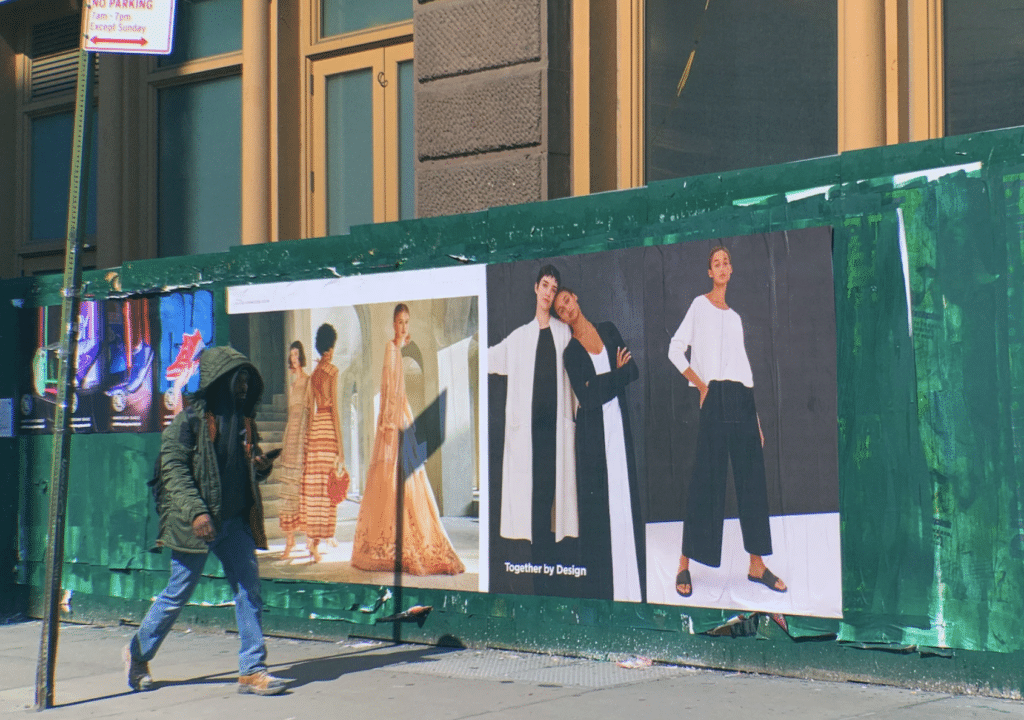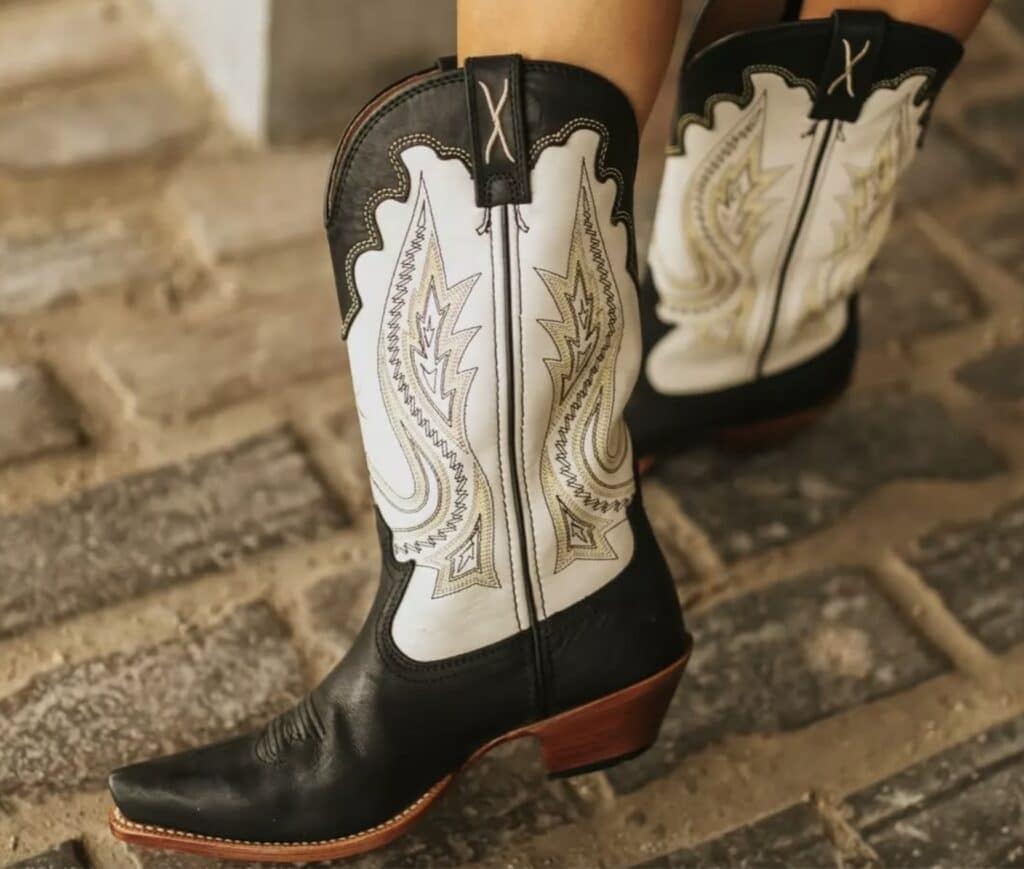In February, a British footwear and accessories brand called Dune introduced a sandal design that all but crashed its website. The entire collection of Loup style sandals, with their easy slide bodies, teeny-tiny block heels, cutout leather uppers, and contrast stitching, swiftly sold out, leaving consumers in a frenzy and demanding a restock … and fast. As it turns out, the $50 sandals look a whole lot like another even more coveted shoe, Hermès’ Oran sandals. Given the Oran’s much steeper $650 price tag, the dead-ringers from Dune were an instant hit.
Other mass-market brands have had the same idea as Dune, and have introduced lookalike takes on Hermès’ time-tested and influencer-approved Oran sandals, as well. Steve Madden boasts at least two different styles that are sure to look familiar to high fashion-minded observers. Target similarly introduced a pair thanks to its in-house Universal Thread line, as did low-cost footwear brands Payless and Qupid – just to name a few. A quick Google search for “H” sandals reveals the breath of copycat variations of Hermès’ shoe.
Interestingly, the explosion of lookalike Oran sandals has not led to any public-facing legal issues in the U.S., and judging by the fact that brands like Dune continue to restock these in-demand sandals, there seems to be a lack of battles currently underway behind the scenes, as well.
Why is that, exactly?
At least one trademark expert says it may be because Hermès has a losing (hypothetical) case on its hands. “I see a bunch of reasons not to sue,” University of New Hampshire professor Alexandra Roberts, who specializes in trademarks, tells TFL.
Primarily, despite Hermès’ stylized “H” being protected by a federal trademark registration in the U.S. (no. 5368300) that covers use on apparel and shoes, Roberts says that the design may not actually be protectable (a fact that would wipe out a potential claim for infringement). To be exact, Roberts states that the “H” cutout on the otherwise simple sandal “may be aesthetically functional.”
The trademark doctrine of “aesthetic functionality” dictates that purely aesthetic features of a product that create a competitive advantage are categorized as functional and thereby, ineligible for trademark (or better yet, trade dress) protection, as functionality is a bar to such protection. While these visual features are not traditionally “functional” or useful, they are considered functional because they are so attractive and thus, desirable to consumers as a result. In short: these design elements provide more of an aesthetic value that is pleasing to consumers than they serve a trademark function.
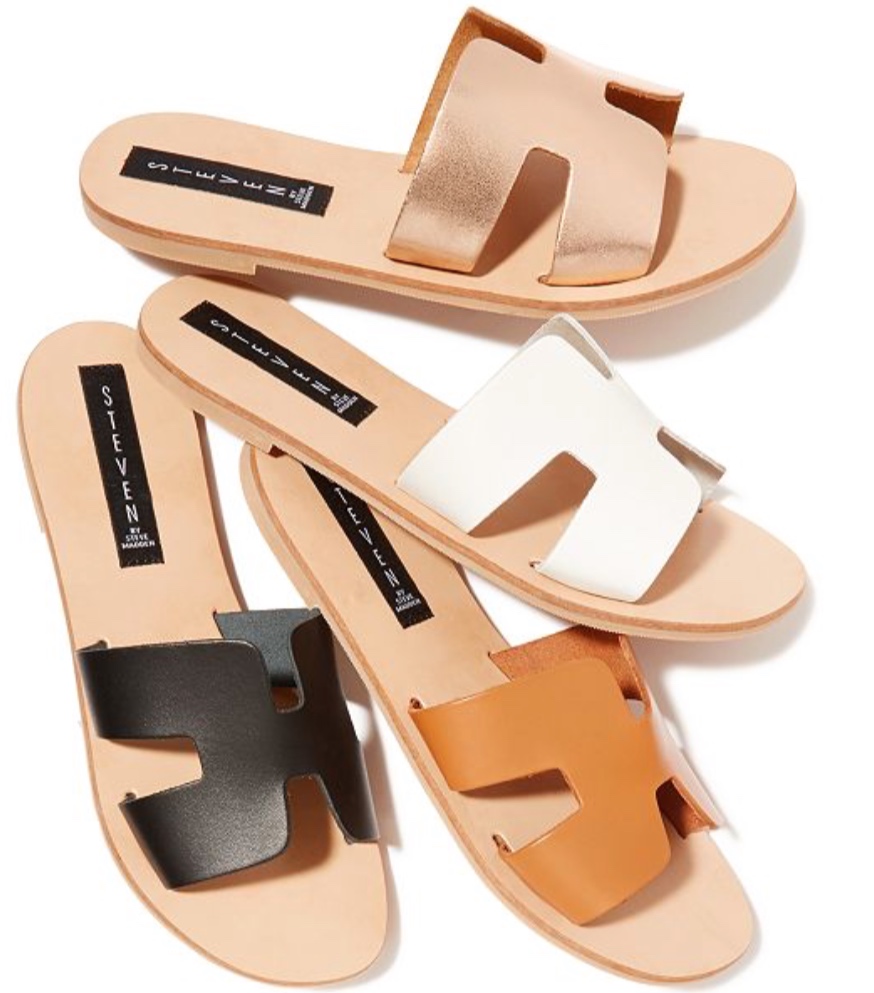
“The design of the [Oran] shoe – particularly the upper with cutouts – is what makes the shoe attractive, trendy, and desirable to consumers,” Roberts says. That function is distinct from the “H” serving as a trademark, i.e., indicating the source of sandal to consumers in the same way that a swoosh communicate that a sneaker is from Nike.
With that in mind, if Hermès were to initiate an infringement suit against the likes of Steve Madden and co., chances are, the companies very well might respond with an aesthetic functionality argument, which, in turn, could lead to the cancellation of Hermès’ registration, making the filing of a lawsuit a potential risk to the Paris-based brand.
Beyond that, there is the argument that the cutout designs embodied in the copycat shoes are simply not similar enough to Hermès’ “H” mark, and as a result, consumers are not likely to confuse the different companies’ products. This lack of potential confusion amongst consumers is integral to a trademark infringement claim, as in order to make a successful claim of infringement, Hermès would need to establish not only that the likes of Dune, Steve Madden, and Target are using a trademark similar to its own, but that consumers are likely to be confused about the source of the copycat products as a result of the use of the similar mark.
The “side views [of the sandals] do look more similar [than the front views], but they also look similar to tons of other sandals,” per Roberts, which raises yet another issue: that the “H” cutout design – no matter how well-known it is to those interested fashion – likely cannot be tied to a single source (or brand) because of the prevalence of similar designs in the market (including ones that pre-date Hermès’ design and trademark registration), as required in order for trademark rights to exist.
Still yet, a hypothetical argument against infringement could be bolstered, of course, by the differences in the channels of distribution between the real thing and the copycat versions: Hermès sells its products, including its sandals, exclusively by way of its own stores and e-commerce site, and never, ever sells its bags, apparel, or footwear by way of – or collaborates with – retailers, such as Target or Steve Madden, or any third-parties for that matter. Price also weighs against a win for Hermès, whose sandals sell for $650, while the dupes are all priced at $60 or less. The chances of consumers confusing a $60 sandal for a $600 one are slim.
With this in mind, paired with the fact that a trademark dilution claim would also likely fail, the explosion of Oran-inspired sandals is likely to continue, something that has not been lost on the fashion media, which has been quick to note the similarity of and the “steal” that comes with many of these low-priced alternatives.







